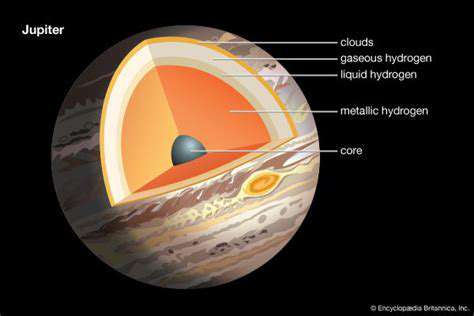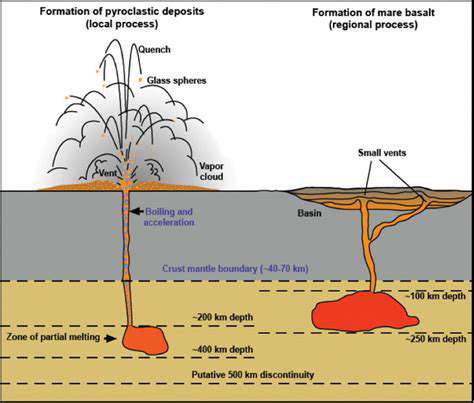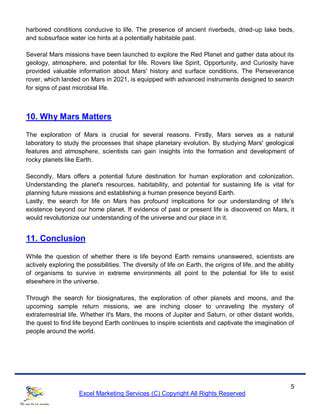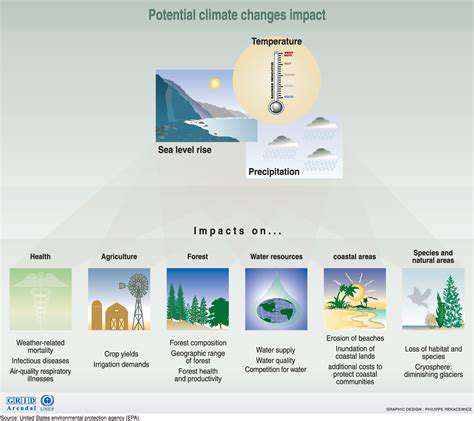Exploring the Martian Surface with Rovers
When we think about Mars exploration, robotic rovers like Perseverance and Curiosity immediately come to mind. These mechanical adventurers traverse the rugged Martian terrain, gathering vital information about the planet's geological composition, weather patterns, and the tantalizing possibility of life - either past or present. Their sophisticated equipment meticulously examines rocks and soil, hunting for traces of water, organic compounds, and other critical markers. These missions unlock secrets about Mars' past and its transformation over time, offering glimpses into whether life could exist beyond our planet. Unlike stationary landers of the past, rovers' mobility enables them to investigate multiple sites, collecting diverse samples that paint a more complete picture of the Red Planet.
What makes modern rovers truly groundbreaking is their capacity to perform on-site sample analysis. These carefully collected specimens are stored with precision, awaiting potential retrieval by future missions for more detailed Earth-based laboratory studies. This sample return capability represents a quantum leap in our quest to understand Martian geology and its potential to have supported life forms.
The Crucial Role of Orbiters
While rovers explore the surface, orbiting spacecraft provide the big picture view. These sophisticated satellites circling Mars carry powerful cameras and scientific instruments that capture stunning high-definition images, analyze surface materials, and map potential landing zones for upcoming missions. The data they collect proves indispensable for planning future rover activities and comprehending the planet's overall geological history and structure. Think of orbiters as the advance scouts that prepare the way for more focused surface investigations.
Understanding Martian Geology through Rovers
Rover observations have revealed fascinating geological features that tell the story of Mars' ancient environments. Discoveries of old river channels, evaporated lake beds, and water-formed minerals serve as critical evidence in the search for potential past life. By studying layered rock formations and sediment deposits, scientists piece together how Mars' climate and geological processes changed over millions of years. These findings depict a world that was once dramatically different from today's frozen desert landscape.
Analyzing Martian Atmosphere and Climate
The study of Mars' atmosphere benefits from both orbital and surface perspectives. Orbiters measure atmospheric makeup, temperature fluctuations, and pressure changes, delivering essential information about current conditions. Meanwhile, rovers with specialized atmospheric instruments provide ground-level data about how the atmosphere interacts with the surface. Together, these observations help scientists reconstruct how Mars' atmosphere evolved and how environmental shifts might have affected the planet's potential for life.
Searching for Evidence of Past Water
Finding proof of ancient water remains a primary objective of Mars exploration. Both rovers and orbiters hunt for geological signs of water activity - dry river valleys, deep canyons, and minerals that only form in watery environments. Since liquid water is fundamental to life as we understand it, discovering evidence of past water greatly enhances the possibility that life once existed on Mars. Detailed examination of these features can reveal how long water persisted and what forms it took across the Martian landscape.
Preparing for Future Human Missions
The information gathered by current missions serves dual purposes - not just uncovering Mars' past but also preparing for human exploration. Understanding radiation levels, atmospheric conditions, and potential hazards proves crucial for ensuring astronaut safety during future missions. The knowledge accumulated will help space agencies design equipment and procedures for establishing a sustainable human presence on Mars, making these robotic missions the critical first steps in humanity's journey to becoming a multi-planetary species.
The Significance of Sample Return Missions
Bringing Martian samples back to Earth represents a major milestone in planetary science. While rover instruments provide valuable data, Earth's advanced laboratories can perform analyses far beyond what's possible on Mars. Detailed examination of these samples will yield unprecedented insights into the planet's history, chemical makeup, and potential for harboring life. This ambitious endeavor stands as a crucial phase in deciphering Mars' most profound mysteries.
Beyond Mars: Exploring the Outer Solar System
Exploring the Icy Moons of the Outer Solar System
The outer solar system hosts numerous icy moons that may conceal vast subsurface oceans, potentially harboring alien life. Missions to worlds like Europa and Enceladus could revolutionize our understanding of habitable environments beyond Earth. By analyzing their frozen surfaces and possibly sampling water vapor plumes erupting from their interiors, scientists hope to gather critical data about the potential for life in these extreme environments. These challenging missions will require highly specialized probes capable of enduring intense cold and radiation while conducting sophisticated analyses.
Europa stands out as particularly intriguing. Scientists estimate its hidden ocean might contain twice as much water as all Earth's oceans combined. Future missions will focus on measuring the ice shell's thickness, the ocean's salt content and temperature, and searching for organic molecules. Understanding Europa's complex dynamics would provide valuable insights into how planetary systems form and evolve in the outer solar system.
The Giant Planets and Their Moons
Jupiter and Saturn, along with their diverse collections of moons, present extraordinary opportunities for scientific discovery. Studying these systems helps researchers comprehend how gas giants and their satellites form and change over time. Detailed observations of atmospheric patterns, magnetic fields, and surface characteristics reveal the unique nature of these distant worlds, including the complex gravitational relationships between planets and their moons.
Jupiter's moon Io presents a volcanic wonderland with continuous eruptions shooting sulfurous material into space. Saturn's moon Titan offers an entirely different fascination - a thick atmosphere and lakes of liquid methane creating a strangely Earth-like yet alien landscape. Exploring these moons will expand our knowledge of planetary diversity and the potential for exotic forms of chemistry that might support life under extreme conditions.
The Kuiper Belt and Beyond
The distant Kuiper Belt, a ring of icy bodies beyond Neptune, holds clues about our solar system's earliest days. Investigating these primitive objects could reveal crucial information about the conditions during planetary formation and the building blocks that created our cosmic neighborhood. This exploration might uncover previously unknown objects and phenomena in these remote regions, potentially rewriting our understanding of solar system evolution.
Analyzing the chemical makeup of Kuiper Belt objects provides a window into the raw materials that formed planets. These ambitious missions require spacecraft capable of enduring the extreme distances and harsh conditions of the outer solar system while gathering high-quality scientific data across multiple parameters.
Asteroid Mining and Resource Utilization
Beyond pure science, outer solar system missions open possibilities for resource utilization. The abundance of water ice and other valuable materials in these distant regions could prove essential for future space exploration and colonization efforts. Developing technologies to extract and process these resources in extreme environments represents a critical step toward establishing sustainable human activities beyond Earth. However, such endeavors must carefully consider the environmental impact and establish responsible practices for space resource management.
The Importance of Space-Based Data Collection
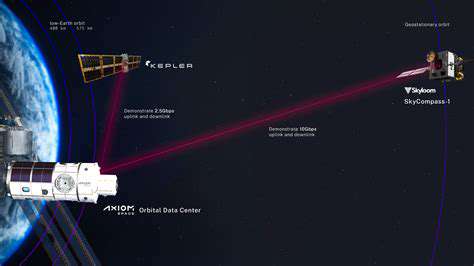
Satellite Imagery for Earth Observation
Earth observation satellites provide invaluable perspectives on our planet's changing systems. These orbital platforms deliver crucial data about land use patterns, vegetation health, urban expansion, and natural disasters. The global viewpoint offered by satellites reveals patterns and trends often invisible from the ground, proving particularly valuable for long-term environmental monitoring and large-scale assessments.
Modern satellite systems combine high resolution with extensive coverage, enabling detailed studies of both local areas and global phenomena. This capability transforms fields ranging from agriculture and forestry to disaster response and environmental protection. Tracking Amazon deforestation or monitoring wildfire spread demonstrates how satellite data helps address critical environmental challenges.
Navigation and Positioning Systems
Global Navigation Satellite Systems (GNSS) have become foundational to modern life, providing precise location data for countless applications. From vehicle navigation to precision farming and land surveying, these space-based systems enable accuracy unimaginable just decades ago. The growing precision of GNSS technology continues revolutionizing how we design, construct, and manage infrastructure projects, ensuring maximum efficiency and minimal errors in execution.
Space Weather Monitoring
Monitoring solar activity and space weather proves essential for protecting Earth's technological infrastructure. Solar flares and coronal mass ejections can disrupt communications, navigation systems, and even power grids. Space-based observatories provide early warnings, giving critical lead time to protect vulnerable systems from potentially damaging space weather events. This protection becomes increasingly vital as society grows more dependent on satellite technologies and electrical infrastructure.
Cosmology and Astrophysics
Space telescopes offer unparalleled views of the cosmos, observing wavelengths of light blocked by Earth's atmosphere. These instruments enable groundbreaking studies of distant galaxies, stars, and cosmic phenomena, pushing the boundaries of our knowledge about the universe's origins and evolution. Discoveries about black holes, dark matter, and the early universe continually reshape our understanding of cosmic history and humanity's place within it.
Future Directions and Technological Advancements

Exploring the Frontiers of Quantum Computing
Quantum computing stands poised to transform numerous scientific and industrial fields by solving problems beyond classical computers' capabilities. This revolutionary technology could simulate molecular interactions, optimize complex systems, and develop unbreakable encryption, though creating stable, scalable quantum processors remains challenging. Researchers continue making progress with different qubit designs, each offering unique advantages for specific applications.
Advancements in Artificial Intelligence
AI continues its rapid integration into daily life and industry, from personalized services to autonomous vehicles. As algorithms grow more sophisticated and data availability increases, AI's transformative potential expands across society. Future development must focus on making AI systems more transparent, reliable, and ethically sound to ensure their positive impact on humanity.
The Internet of Things (IoT) and its Implications
The expanding network of interconnected devices creates new possibilities for data collection, automation, and decision-making across industries. While IoT promises significant efficiency gains and innovative services, it also raises important questions about data security and privacy that demand careful consideration as the technology proliferates.
Sustainable Energy Solutions
Addressing climate change requires breakthroughs in renewable energy generation, storage, and distribution. While solar and wind power continue advancing, challenges remain in energy storage capacity and grid integration. Research into advanced battery technologies, improved solar cells, and smart grid systems will be crucial for building a sustainable energy future.
Biotechnology and Personalized Medicine
Biotech innovations enable medical treatments tailored to individual genetic profiles, potentially revolutionizing healthcare outcomes. Technologies like CRISPR gene editing open new possibilities for treating genetic disorders, though their development must proceed with careful ethical oversight to ensure responsible use.
Materials Science and Nanotechnology
Advances in nanomaterials create opportunities for stronger, lighter, and more efficient materials across industries. From aerospace to electronics, these innovations promise to enhance existing technologies and enable entirely new applications, provided their environmental impacts are properly managed.
